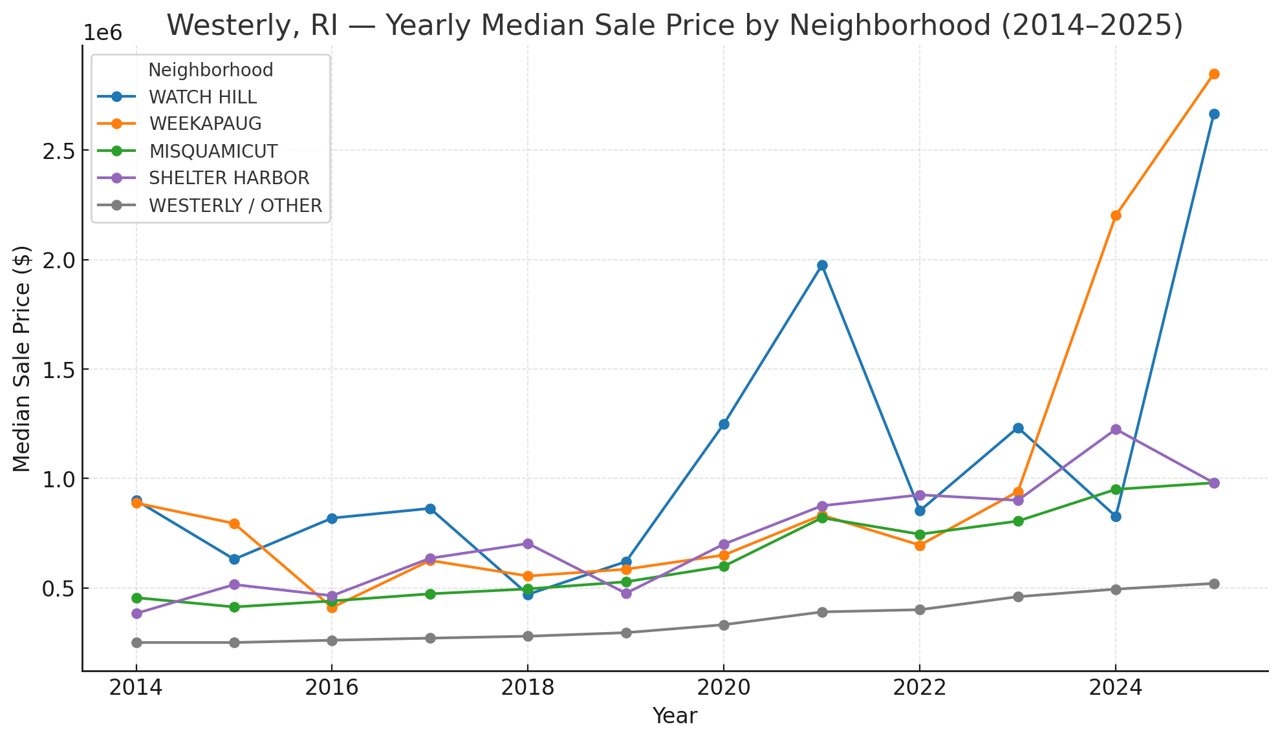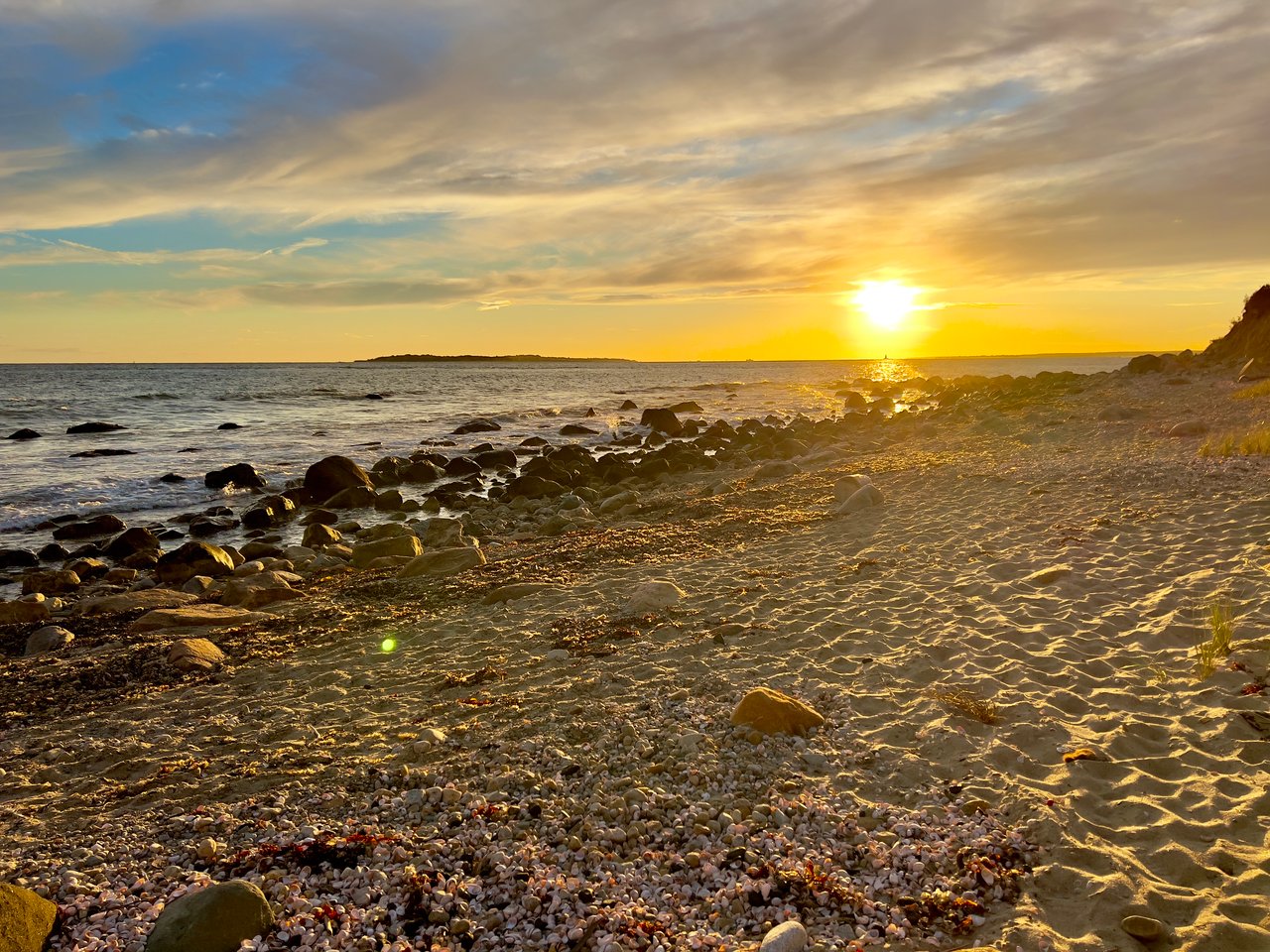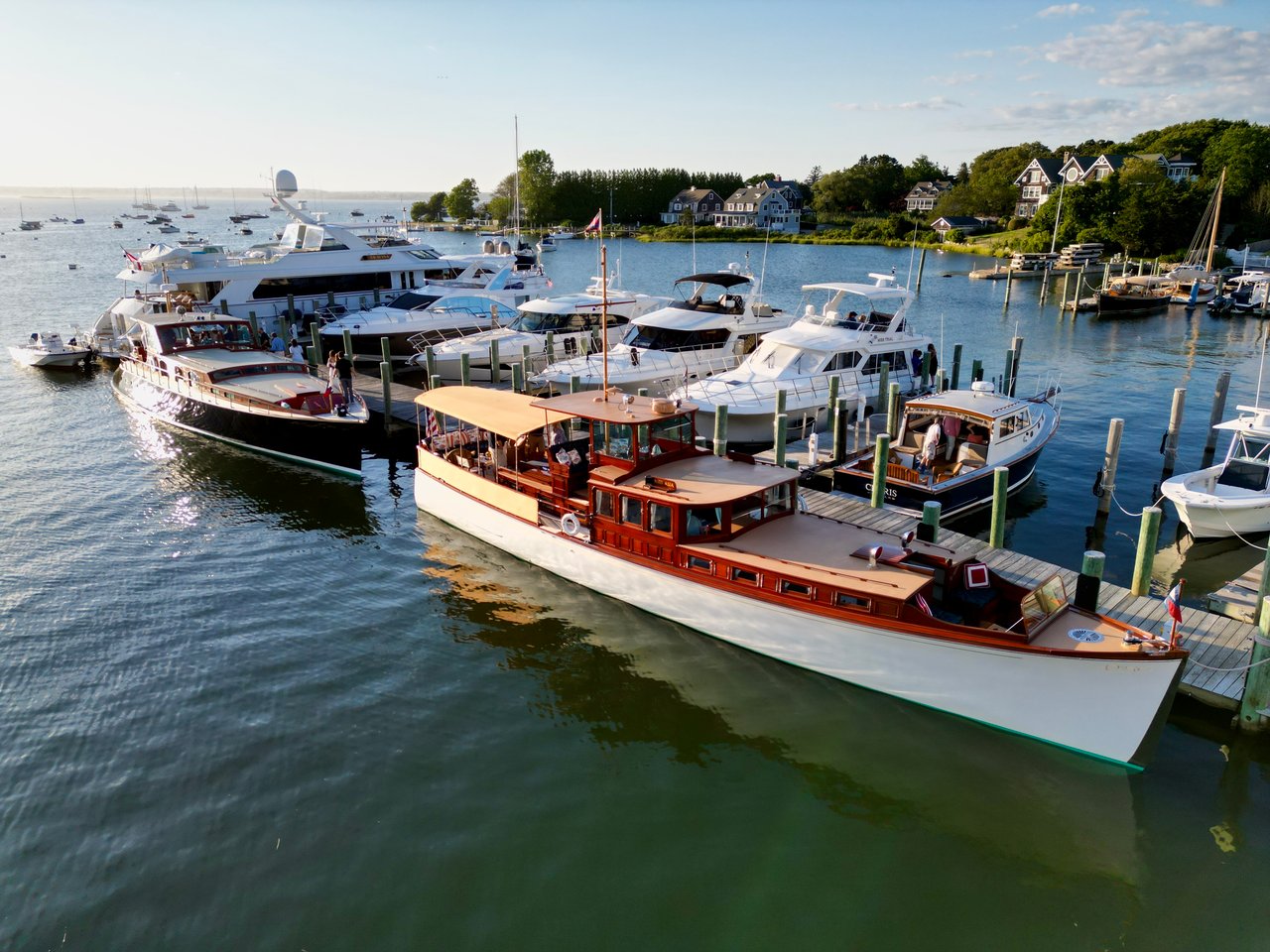Southern Rhode Island’s charm, particularly in the seaside villages of Watch Hill, Weekapaug, and Charlestown (“Quonnie”), is rooted in a fascinating history that spans from the mid-1800s through the transformative decades of the 20th century. Today these communities are known for their elegant homes, scenic coastlines, and serene ambiance, but their origins tell a rich story of tourism, resilience, and cultural evolution.
The Birth of a Summer Destination: Watch Hill in the 1800s
Watch Hill began its transformation into a summer resort in the mid-1800s, thanks in large part to improved transportation links and a burgeoning class of wealthy urbanites seeking refuge from city life. Initially a quiet outpost with a maritime economy based on fishing, whaling, and shipping, Watch Hill quickly became a magnet for vacationers following the completion of the Stonington Railroad in 1837, which connected travelers from New York and Boston to the Westerly area.
By the 1850s, Watch Hill had already begun to evolve into a tourist hub. Large summer hotels sprouted up along the bluffs, offering sweeping views of the Atlantic Ocean. The earliest of these included the Watch Hill House, opened in 1845, and the Atlantic House, which became a local icon. By the turn of the century, Watch Hill boasted over a dozen grand hotels and inns. The Ocean House, which still exists today in a modern form, was among the most prominent. These hotels often outnumbered private residences, and many summer visitors were tourists rather than property owners.
Where Did the Visitors Come From?
Most early summer visitors to Watch Hill hailed from major northeastern cities - particularly New York City, Hartford, and Boston. The area also attracted affluent families from Philadelphia and Providence. Interestingly, there was indeed a Midwestern contingent, especially from St. Louis and Cincinnati, who began visiting and eventually purchasing summer homes. These families were drawn to Watch Hill's reputation as an exclusive and genteel seaside resort, often returning generation after generation.
The advent of steamboat travel further enhanced Watch Hill’s appeal. Steamships would ferry guests from New York to Stonington, where they could easily access the Watch Hill area. This made the resort region one of the more accessible coastal retreats for affluent Americans in the 19th century.
The Rise of Private Residences and Family Estates
While hotels initially dominated, by the late 19th and early 20th centuries, wealthy visitors began building private cottages and summer estates. The architecture of these homes reflected the Victorian and later Colonial Revival styles popular at the time. Families who built summer homes often stayed for the entire season, with multiple generations enjoying the temperate coastal climate.
A significant group of early property owners hailed from Cincinnati, Ohio, who acquired much of the north end of the Watch Hill peninsula in the 1880s. Their investment in land and property development played a key role in shaping the residential landscape of the area. One prominent figure among these early residents was Henry Howard, a former Governor of Rhode Island, who exemplified the political and social prominence of Watch Hill’s summer community.
Weekapaug: A More Peaceful Retreat
Just east of Watch Hill, Weekapaug developed a quieter, more family-oriented reputation. The name "Weekapaug" means "at the end of the pond" in the Narragansett language, and its landscape of salt ponds and oceanfront dunes provided a different kind of coastal allure.
Weekapaug's rise as a summer destination began slightly later, around the 1870s. While it never had the grand hotels of Watch Hill, it was known for boarding houses and small inns, including the original Weekapaug Inn, which opened in 1899. The area quickly attracted families looking for a quieter alternative to Watch Hill, and its emphasis on conservation and natural beauty continues to this day.
Early visitors to Weekapaug were also primarily from New York, Connecticut, and Massachusetts, though it also drew a loyal group from further afield. Many families bought land and built homes that were passed down through generations, forming a close-knit seasonal community.
Quonochontaug ("Quonnie"): Rustic Beginnings and Intellectual Visitors
To the west of Weekapaug, Quonochontaug - affectionately called “Quonnie” by locals - offered an even more rustic, undeveloped appeal in the 19th century. Originally a fishing village, Quonnie remained off the radar of the major tourist boom until the early 20th century. When summer visitors did arrive, they often rented simple cottages or camped near the beach.
What makes Quonnie particularly notable is its reputation as a retreat for intellectuals and academics in the mid-20th century. After World War II, it was rumored that Albert Einstein vacationed in the Charlestown/Quonnie area, seeking peace and solitude near the shore. While some debate the veracity of these claims, there is evidence he visited Rhode Island and the surrounding region during this time. Whether or not he stayed in Quonnie, the area’s quiet charm certainly attracted those looking to escape the spotlight.
The Decline of the Grand Hotels
By the mid-20th century, the landscape of Watch Hill had shifted significantly. The golden era of grand hotels was waning. Several hotels were destroyed by fire in 1916, including the Atlantic House, the Columbia House, and the Watch Hill House. Others were torn down due to changing vacation patterns, the rise of the automobile, and a preference for private summer homes.
The Hurricane of 1938 marked a significant turning point. This devastating storm destroyed much of the infrastructure along the southern Rhode Island coast, including many of Watch Hill’s and Weekapaug’s beachside hotels, cottages, and boardwalks. In the storm’s aftermath, many families opted to rebuild private residences instead of reestablishing large inns or hotels.
Notable Visitors and Stories from the Era
One of the most colorful figures in Watch Hill’s mid-20th-century history was Rebekah Harkness, an heiress to the Standard Oil fortune and a noted philanthropist and patron of the arts. In 1948, she purchased a grand estate on Bluff Avenue originally built in 1930 by the Snowden family. Known then as Holiday House, the mansion became famous for its glamorous parties and illustrious guest list. Rebekah Harkness hosted an array of celebrities and cultural figures, including Clark Gable, Douglas Fairbanks Sr. and Jr., Groucho Marx, David Niven, and Jean Harlow. Her presence in Watch Hill brought a touch of Hollywood glamour to the otherwise understated summer colony.
Besides Harkness’s celebrated gatherings, the area’s understated charm continued to attract artists, writers, and early Hollywood figures who preferred to vacation away from the public eye.
An interesting local tidbit: the carousel in Watch Hill, known as the Flying Horse Carousel, dates back to the 1870s and is considered the oldest continuously operating carousel in the United States. It remains a beloved fixture of the community and is a testament to Watch Hill's enduring appeal to families.
A Legacy Preserved
By the 1960s, Watch Hill, Weekapaug, and Quonnie had firmly established themselves as exclusive but low-key summer enclaves. The shift from grand, bustling hotels to private homes created a unique blend of historical preservation and quiet luxury that continues to define the region.
Today, many of the summer homes from the late 1800s and early 1900s remain, carefully maintained and treasured by descendants of the original owners. Conservation efforts have ensured that much of the natural beauty that first drew visitors remains intact.
For those who summer here now, understanding the area's past enriches the present. Whether strolling past the site of a former grand hotel, watching children ride the Flying Horse Carousel, or simply enjoying the ocean breeze, one walks in the footsteps of generations who have loved and cherished this special corner of coastal Rhode Island.




